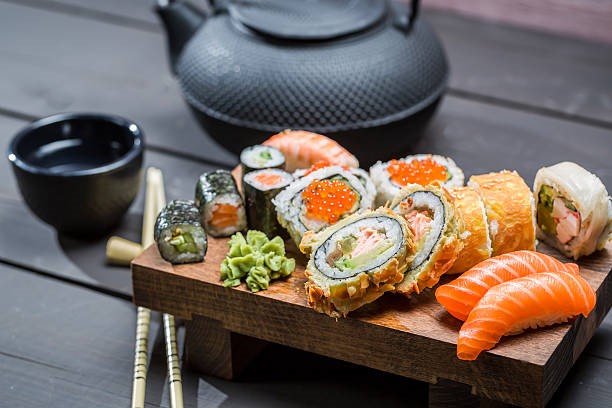“When diet is wrong, medicine is of no use. When diet is correct, medicine is of no need.” – Ayurvedic Proverb
Feast Like the Japanese, Lose Weight and Live Longer Than Methusellah
In addition to being a feast for the eyes and the palate, Japanese food is also highly healthy. Continue reading to learn about the great health benefits of Japanese food and how to incorporate some of these wise eating practises into your normal routine if you want to start fresh this year.
Eat like a Samurai
Japan has the lowest developed-world obesity rate at just 3%, which is a small number compared to the USA's 36.9% and the UK's 25% rates. In terms of diet, it is no mystery that it has the longest life expectancy in the world, with an average lifespan of 75 to 80 years that is healthy and free from disabilities.
The rising tide of globalisation has drawn attention to the fact that Japanese people acquire weight quickly when they adopt a western diet, which has been linked to a rise in lifestyle-related illnesses like heart disease, cancer, and diabetes in Japan.
The Japanese government passed the Basic Law of Shokuiku (Food Education) in 2005 in an effort to reverse this worrying trend and promote healthier, more traditional eating habits. Instead than dieting, counting calories, or fasting, the shokuiku way of life emphasises thoughtful eating, striving for balance, and sharing meals with loved ones.
That seems excellent to us. What, therefore, makes Japanese cuisine so revered, and how can you use these traditional eating practises to enhance your own health and wellbeing?
Some 5 health-boosting elements of Japanese cuisine
1. Consuming few calories. Japanese food frequently has fewer calories and is smaller in size than Western food. The average Japanese person consumes 25% fewer calories per day than the average American. Furthermore, unlike the trendy low-fat and low-calorie diets in the West, no flavour or satisfaction is sacrificed.
2. Has a well-balanced diet. A typical Japanese diet may include the ideal balance of nutrients (12 percent to 15 percent for protein; 20 percent to 25 percent for fats; and 60 percent to 68 percent for carbohydrates). In the West, we often eat less rice and more meat and fat, making it harder to maintain a balanced diet.
3. The nutritional elements. The Japanese diet is rich in low-density, high-nutrient foods including fish, vegetables, fruit, tofu, rice, and broth-like soups. Salmon, sesame seeds, seaweed, green tea, and shiitake mushrooms are considered staple foods in Japan. In the West, these foods are occasionally referred to as "natural foods."
4. Seasonal food. In the UK, imported goods are regularly used, and the same products are typically used all year long. Japanese food, on the other hand, makes considerable use of seasonal, regional ingredients. This keeps each item as fresh, tasty, and nutrient-rich as possible while reducing the need for preservatives and other synthetic chemicals.
5. Taking in raw food. The popularity of dishes
like sashimi and sushi is testament to the importance of raw ingredients in
Japanese cooking. While eating these items raw boosts energy levels, mental
clarity, and the quality of sleep, boiling them at high temperatures can reduce
the flavour and nutritional content of the food.
The Japanese dinner scene
Japanese food is not only delicious aapanese dinner scenend aesthetically pleasing, but it also smells and tastes amazing. Care has been taken in hohe Jw the food is presented, with enticing displays of colourful dishes that are treated like valuable works of art.
Japanese bowls and plates are typically smaller and frequently more aesthetically beautiful than those found in the West, whereas chopsticks encourage individuals to take smaller mouthfuls. As a result, diners are forced to eat mindfully, slowly, and with their eyes open, which aids the brain in determining when the body is full.
A tantalising selection of little bites that vary in taste, texture, and appearance are provided by the traditional ichiju-sansai (one soup, three dishes) table arrangement, which come together to provide a wholesome meal. When done correctly, this is a guaranteed way to have a hearty dinner and get the health benefits of Japanese food. However, it does require some careful planning.
CLICK HRE TO LEARN ABOUT OKINAWA FLAT BELLY TONIC
DISCLAIMER; - The information on this blog stie is not intended or implied to be a substitute for professional medical advice, diagnosis, or treatment. All content including text, graphics, images and information, contained on or available through this blog site is for general information only. NEVER DISREGARD PROFESSIONAL MEDICAL ADVICE OR DELAY SEEKING MEDICAL TREATMENT BECAUSE OF SOMETHING YOU HAVE READ ON OR ACCESSED THROUGH THIS BLOG SITE
.jpg)






Comments
Post a Comment